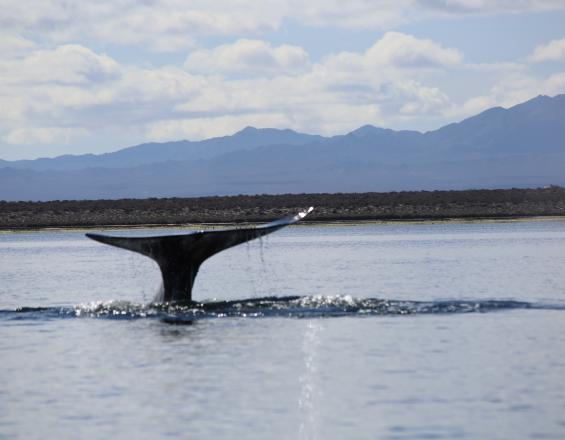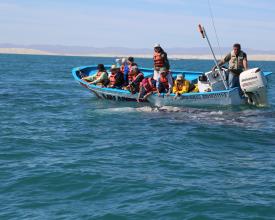Sustainable and participative management in the regulation of marine activities for the preservation of species in "El Vizcaino Biosphere Reserve"
Snapshot Solution

Grey whale
Everardo Mariano
El Vizcaino Whale Sanctuary is the most important place in the world for the protection of the once endangered grey whale.
In this area there are fishing and nautical tourism, which coincides with the migratory routes of whales.
Due to this fact and in order to ensure the habitat conservation, the following measures have been taken:
- Weekly biological monitoring.
- Ethological analysis in a system of areas differentiated by activities.
- Shared strategies with tourism companies so that their activities do not alter the biological processes of whales and whale calves.
- Implementation of the 1996 emergency Act for the protection and conservation of the grey whale.
These measures have made progress towards the conservation of the grey whale and driving to the economic development of the region and fostering the participation of the civil society.
Last update: 06 May 2021
3337 Views
Impacts
Impacts
- Grey whale population recovery.
- Designation of specific whale watching areas.
- Ban on fishing nets in lagoons.
- Broad community participation.
- Good tourism practices in these lagoons led to national guidelines.
- Regulatory support with clear guidelines of behavior for each activity.
- Establishing the carrying capacity to limit the number of boats that can perform whale watching.
Sustainable Development Goals
SDG 3 – Good health and well-being
SDG 8 – Decent work and economic growth
SDG 11 – Sustainable cities and communities
SDG 12 – Responsible consumption and production
SDG 13 – Climate action
SDG 14 – Life below water
Connect with contributors
Other contributors
Malarrimo
Civil Society
Kuyima
Sociedad Civil San Ignacio
Casa Mexicana
Sociedad Civil Ejido Juárez
Exportadora de Sal
Iniciativa privada




